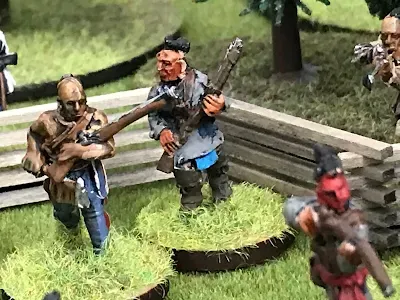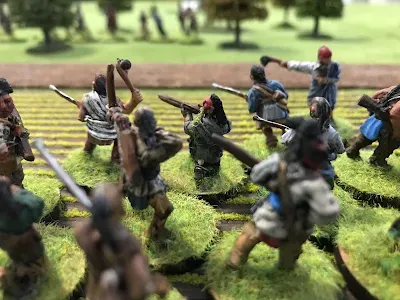During the Niagara campaign of 1814, the US Left Division included a brigade of volunteers under the command of General Peter Porter. The including troops from New York and Pennsylvania. They acquitted themselves well in both the battle of Chippewa and Lundy's Lane, much to the surprise of skeptical regular army officers!
Pennsylvania and New York each had various state militia uniform distinctions. However during the 1814 campaign they were supposed to be equipped by the US government and dressed much like the remainder of the Left Division. The leather shako and short grey roundabout jackets or blue coats were very much in evidence.
But the question arose how to portray them on the table top? I wanted them to look more organized then most militia but less regular then regulars. I turned to the amazing figures from Knuckleduster miniatures. These have been sculpted to portray such an unusual outfit. The bayonets are unfixed and in their scabbards, Each figure has a variety of irregular equipment and clothing. Their shakos are not trimmed out to the full extent one would expect of a disciplined regular. Most have substitute headgear such as straw hats, round hats, and old felt shakos or caps are worn by some of the troops.
Although some have the standard issue regular blue coat, others have civilian coats. A few wear work smocks, These were a very common item in camp and are rarely seen on the wargame table. The pattern formed the basis of the rifle frock, which had the addition of fringe and a "cape" (layer of cloth over the shoulders, also with fringes).
Miltia units sometimes painted their unit designations on the shakos rather than wearing a shako plate. They were also quite fond of decorating their knapsacks, canteens, and caps with stars, eagles, and other patriotic designs.
lastly, there is a marvelous militia general. He is dressed to the nines and has a most self satisfied expression on his face. A outstanding miniature!
Altogether a nice impression for the period and a unique look for an over looked period.








.jpeg)









.jpeg)
.jpeg)



